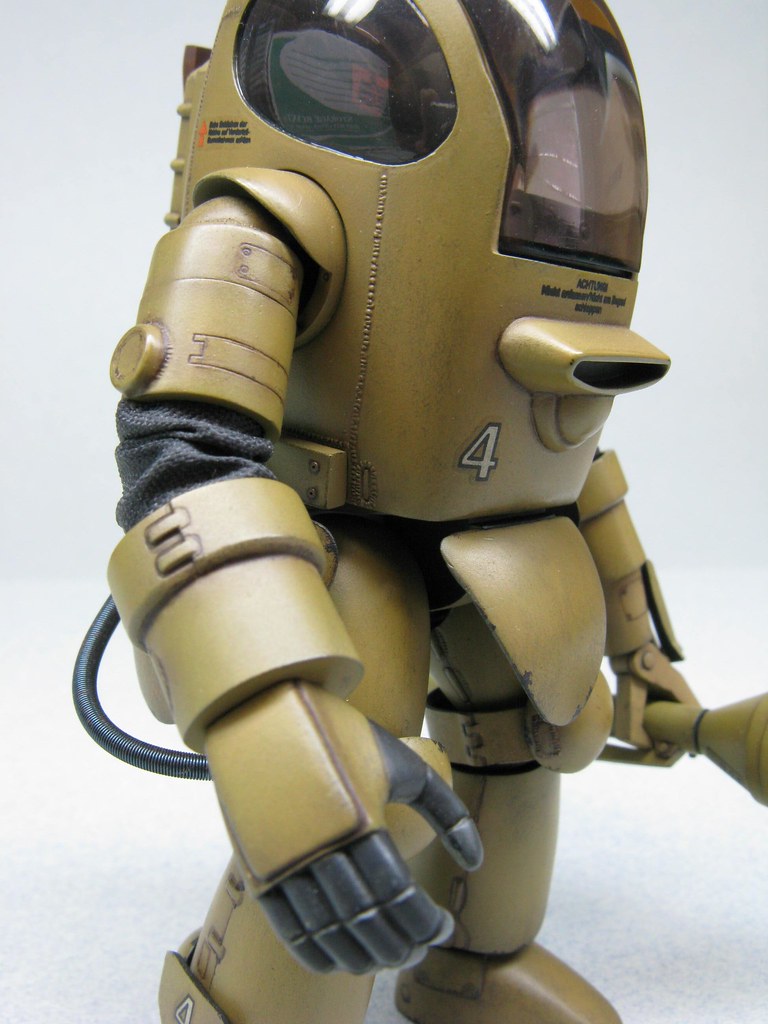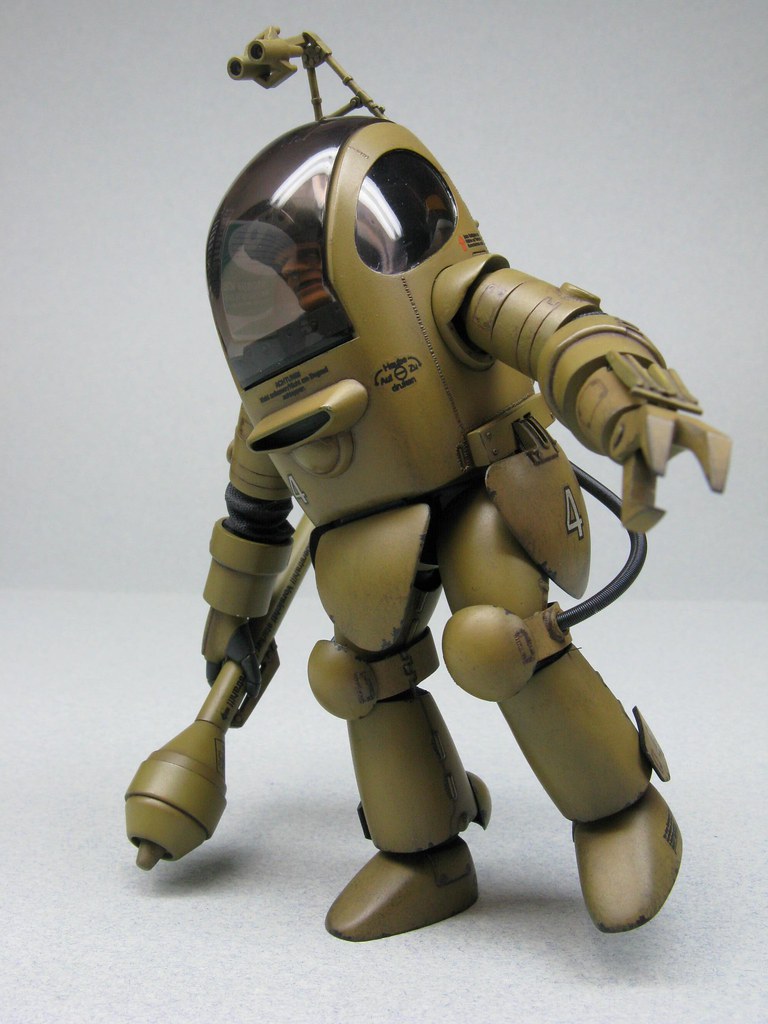Can anyone who builds these models tell me how to paint the sleeve connectors. They are the rubber ones that connect the arms, legs and such. I have tried acylic and it comes right off and the enamel is not better. I know it is the rubber being used but would appreicate it if you could tell me how you paint it or make it look more realistic. Thanks and have a great day.
The material is probably polyethylene, so you can’t really paint it without the risk of flaking. You could just do a weathering wash over the molded color instead. Some just give up the movable features and sculpt epoxy putty joint covers. I have used little tubes made from an old umbrella for a PKA H.0’s elbows and knees over aftermarket polycapped joints. It worked okay but MaK suits don’t really pose all that well so the value of the work involved was questionable. HTH
Thanks for the response, that stuff is really nice but hard to work with. I have a book that shows some of the Japanese modelers make the models and seems they add putty and that is what they work with. I will try something for sure but I want to thank you for your response. Have a great day.
You can get a ‘rubber bumper paint’ at the auto parts store in a spray can that might help. If so wash the part well with dishwashing detergent before you spray it on. I’ve used as primer on rubber style tank tracks with good results but of course they don’t really flex once they’re in place. This may flake and come off when it gets a little old and dried out too. You might be better just going with G’s recommendations.
Thanks, I will try that also as I have a couple more of these models to build. Way back when they came out (Nitto) I bought a bunch from a estate sale. Go figure that I would build some, give away some and then come to realize how expensive they are now and how collectable they are now. I don’t think I even paint $20 for the lot I bought, must have been maybe five. Thanks again.
Hector,
This is what the umbrella fabric looks like in place:
https://flic.kr/p/9Ti4sJ] [/url]PKA H0 5 by N.T. Izumi, on Flickr
[/url]PKA H0 5 by N.T. Izumi, on Flickr
And this is the maximun range of motion possible - rather unimpressive:
https://flic.kr/p/9Tfffv] [/url]PKA H0 7 by N.T. Izumi, on Flickr
[/url]PKA H0 7 by N.T. Izumi, on Flickr
I have seen fixed pose MaK kits with the epoxy joints that look much more animated.
Gee, that umbrella fabric looks really good there G, and I can see what you mean about the limited articulation.
Nice, I will try it, I do have an old umbrella for sure. Nice model for sure, paint is really nice and clean. I have a couple that I have dirtied up some but they look ok, my eyesight (71 years old) gets me in trouble some time but I enjoy the modeling anyway, as they say, “it’s your model, make it your way”. Take care and thanks again.
Hmmm.
I wonder ? Why does the top of the body somewhat resemble an " O H 6 Little Bird " ?
Kow Yokoyama, the graphic artist who created SF3D/Maschinen Krieger, used various donor kits, to build models of the illustrations he drew. I think you’re right about this particular donor subject. I think he used helicopters for each of the “canopied” suits.
I apologize if you already knew that.
One of the most recognizable donor kits in his models is the Revell 1/32 P-38 Lightning used to build the Falke anti-gravity fighter. Kow used the engine booms for the same thing on the Falke. The cockpit pod came from a 1/25 Porsche, if I’m not mistaken.
Some MaK fans build the subjects the same way as Kow did. They accumulate the donor kits, and scratch-build and kit-bash them into the finished model. My hat’s off to them. I’d rather buy the prepared kit, myself.
As Real G mentioned, the material is a soft polyethelene and paint will tend to flake off. You might want to replace those poly parts altogether.
For the power hoses, you can use wire and fine springs, which are available from various Japanese model companies, among other sources; guitar strings; or my favorite, wire solder wrapped with finer beading wire from the craft store.
For the limb joints, you can use modeling putty, like Miliput, Green Stuff, Aves A&B, etc, either applied over the poly parts, or, replace the poly parts completely and use wires to connect the joints, and cover the wire with the putty. You give up being able to re-pose the model, but that’s not a big deal to too many modelers.
As far as painting the poly pieces goes, when I have used those parts, I made sure I cleaned them first, when I clean all of the sprues, with warm water and a couple drops of a de-greaser (SuperClean). When it comes time to paint, I make sure I prime well. I use Tamiya’s Fine Surface Primer, but for the hoses, I have applied Mr. Surfacer as a primer. I also experimented once with applying a thin layer of white glue over the hose, then priming it and painting it (worked OK, but not worth the extra effort). The joints aren’t as likely to flake as the hoses are.